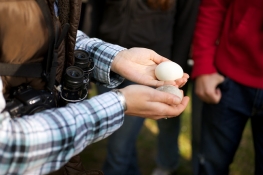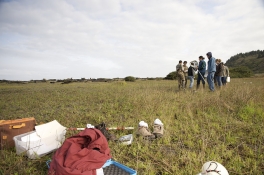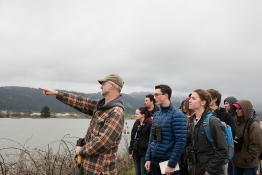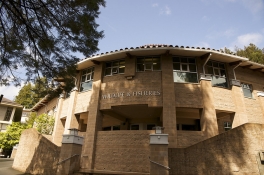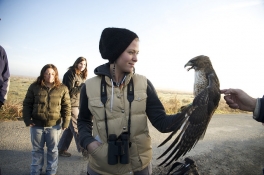Collections Use Policy
In-House Use
The specimens in the Wildlife Museum are available for use by qualified researchers. Student use must be approved and facilitated by a faculty member. The Cal Poly Humboldt Wildlife Department must be acknowledged in any publications resulting from use of our specimens, and a reprint of the publication is to be sent to the curator.
To arrange access to specimens in the museum please contact the Museum Curator
Loans
1. Specimens will only be loaned for research purposes to qualified institutions and scientists. In the case of requests from student researchers, the major professor or research sponsor should transact the loan. Individuals requesting a loan must be able to provide clean, pest-free, and secure work and storage areas to protect borrowed specimens from damage or theft.
2. Specimens will only be loaned for limited time periods (up to 4 weeks) unless
a legitimate reason for a longer loan is presented. For example, a scientist conducting
a taxonomic study that requires specimen comparison may require a longer loan because
they must accumulate the entire sample in order to make the comparisons.
3. Specimens are not loaned to natural history museums, schools, or individuals for
teaching, public displays, or volunteer activities. Exceptions can be made if the
public does not handle the specimens and there is sufficient indication that the
specimen will be protected against damage or theft.
4. Specimens loaned for the above purposes should be of low value (e.g. common
species, specimens with no relevant location, biological, or date data). Loans for
educational purposes will be for short-term (up to 3 weeks) use. Educational loan
specimens should come from that set of specimens specifically reserved for such use,
which are kept in separately. Specimens from the main collection should only be used
after special consideration is made of such use.
5. Rare, extinct, or otherwise invaluable specimens will not be loaned without a
discussion of the faculty.
6. Taxidermic mounts, eggs, and specimens in fixed cases will not be loaned unless
there are exceptional circumstances.
Requests for loans should be made in writing and sent to the Museum Curator
Destructive Use Policy
The Wildlife Department Museum houses a sizable collection of avian and mammalian
specimens. These specimens have important historic, educational and research value.
The historic aspect of the material housed in museums provides unique research
opportunities, and use of Wildlife Dept. museum specimens by the research community is
encouraged. However, it is the responsibility of the Department to balance collection
use with the long-term preservation of these specimens. New chemical and molecular
techniques have created a demand for destructive use of museum specimens. Any specimen
use that includes removing material (including tissue, feathers or hair) or dissection
of specimens is considered destructive use.
Requests for destructive sampling should be made in writing and sent to the Museum Curator
Requests should include:
1. The purpose and scientific merit of the research.
2. A detailed sampling protocol.
3. The number of specimens to be used from Humboldt Wildlife Museum, and from other
collections.
4. Justification for using museum specimens rather than fresh material.
5. Qualifications of those performing the protocols. In the case of student
researchers requests should be submitted by the student's advisor.
Requests for destructive sampling of specimens will be reviewed by the Museum Curator
and the Wildlife Department Chair. Requests for material that is poorly represented
in the collection or of rare or endangered species will be approved only under special
circumstances.
The Museum Curator must be notified of samples from Wildlife Museum specimens
transferred to other researchers. Researchers must acknowledge the Humboldt Wildlife Museum
in all publications resulting from the use of Humboldt Wildlife Museum specimens, and a
reprint must be sent to the Museum Curator.
For more information contact the Museum Curator

